If loving this skillet is wrong, I don’t want to be right.
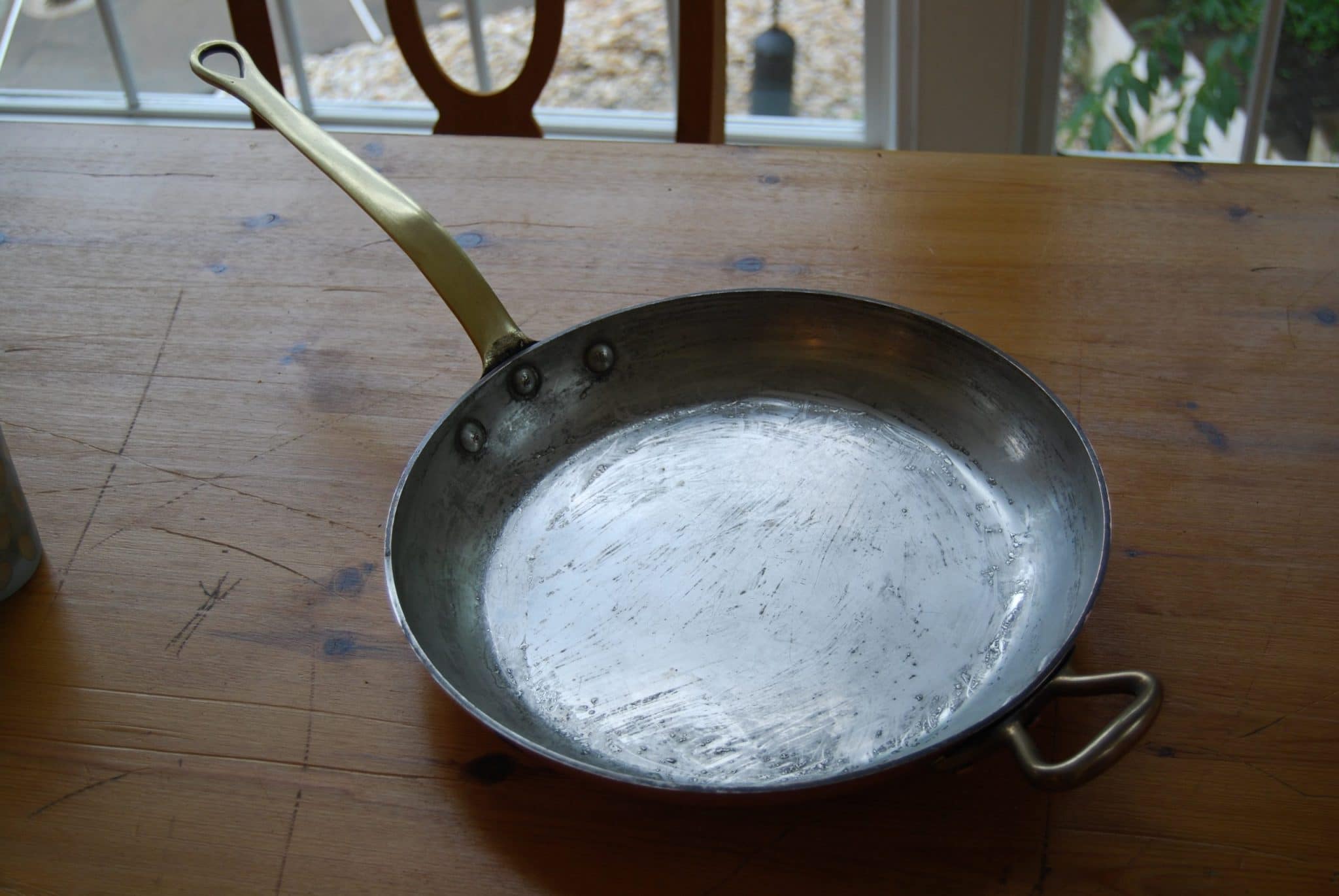
- Type: Tin-lined skillet in smooth finish with a brass handle fastened with three copper rivets and helper handle fastened with two copper rivets
- French description: Poêle étamée avec une poignée en laiton munie de trois rivets en cuivre et une poignée auxiliaire munie de deux rivets en cuivre
- Dimensions: 31cm diameter by 5cm high (12.2 inches by 2 inches)
- Thickness: 3mm at rim
- Weight: 3194g (7 lbs)
- Stampings: “MADE IN FRANCE”
- Maker and age estimate: Unknown, possibly Mauviel, but that’s just a guess; 1970s to 1990s
- Source: Harestew
Some things about this pan are not what I’d consider ideal. First and foremost, it’s got brass hardware, which is notorious for sucking up cooking heat from copper and rather rapidly becoming uncomfortable to handle. This is not such a big deal for a rondeau or daubière with stubby brass loop handles used to haul the thing two-handed from stovetop to oven to table or whatever. But a skillet is meant to be lighter-weight for flipping and turning and pouring, which means you’re maneuvering and tilting and doing all kinds of things that are tough to do when the handle is burning hot. (This is why many copper users prefer iron hardware on skillets.)
Now let’s take a closer look at that lining. This pan is not dirty — it’s clean as a whistle, but the tin itself is stained and bumpy. If you were dead set on getting this thing perfectly smooth inside by scrubbing it, you’d end up wearing the tin away.

Now look at the edges. Someone has used this pan on high heat and the tin has melted a little, forming some lumps.

You know what? This doesn’t matter to me one whit. This pan is ugly like a well-seasoned cast iron skillet is ugly: looks don’t matter when it comes to great cooking. The tin inside has achieved an almost metaphysical state of perfection: lumpy, smeary, a little brown in places, a little melted… and yet this pan is so non-stick and so easy to handle that it is my preferred skillet. Don’t believe me?

That’s what the bottom of a well-used copper pan looks like: the heat accelerates the chemical reactions that form a layer of oxidation. The copper is not damaged — the oxidation can be polished away in seconds — and the oxidation itself doesn’t affect the pan’s performance at all.
Harestew — the lovely woman who sold this to me — wanted to make sure that I understood that this pan has, shall we say, some cosmetic issues. But even as she described the brass hardware (not so desirable) and the state of the tin lining (unappealing), she kept insisting that something about this pan was just special. She was absolutely right: this is a special pan. It loves to cook and I love to cook with it, which is pretty much all I could ever want from a pan.
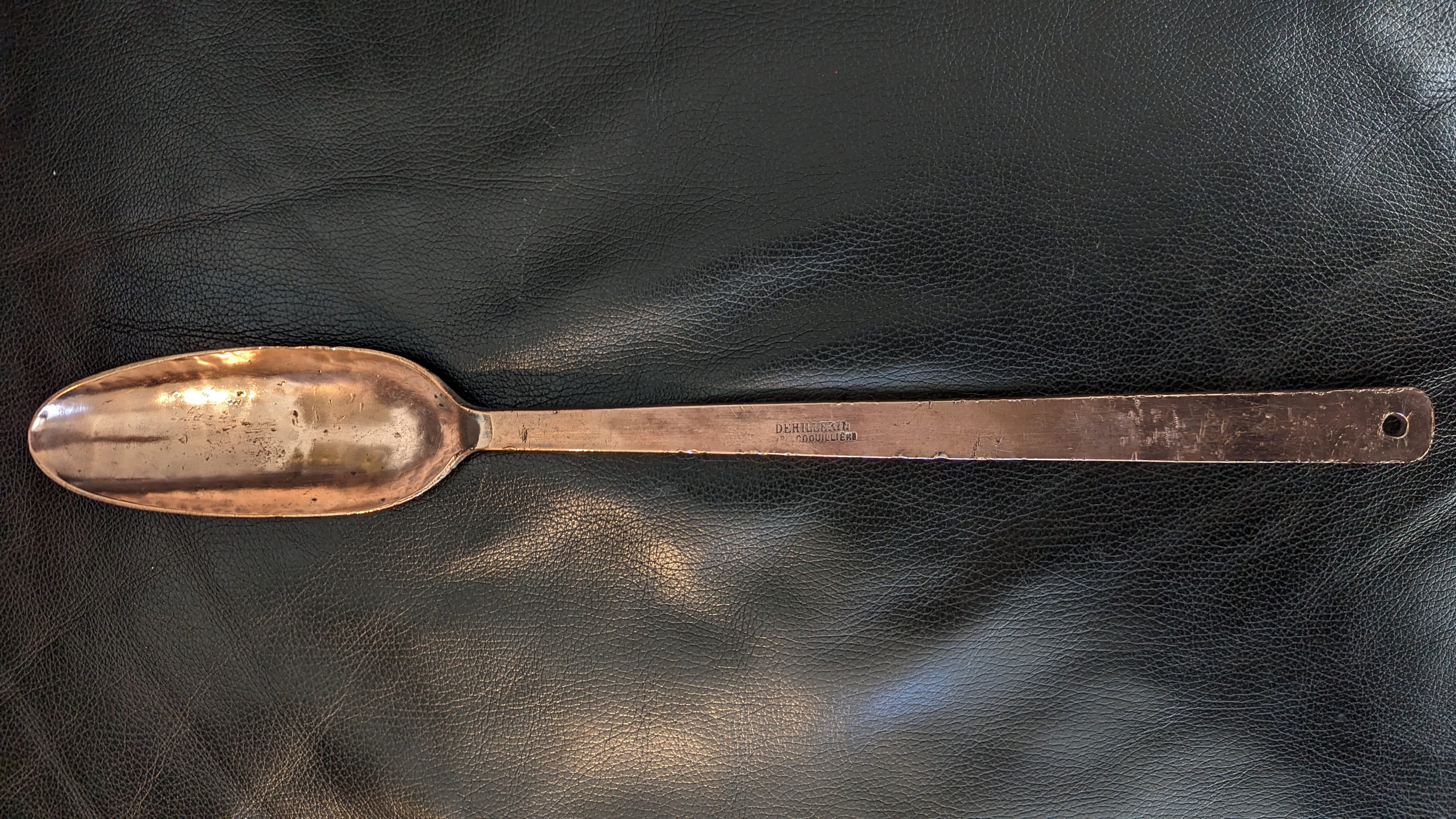

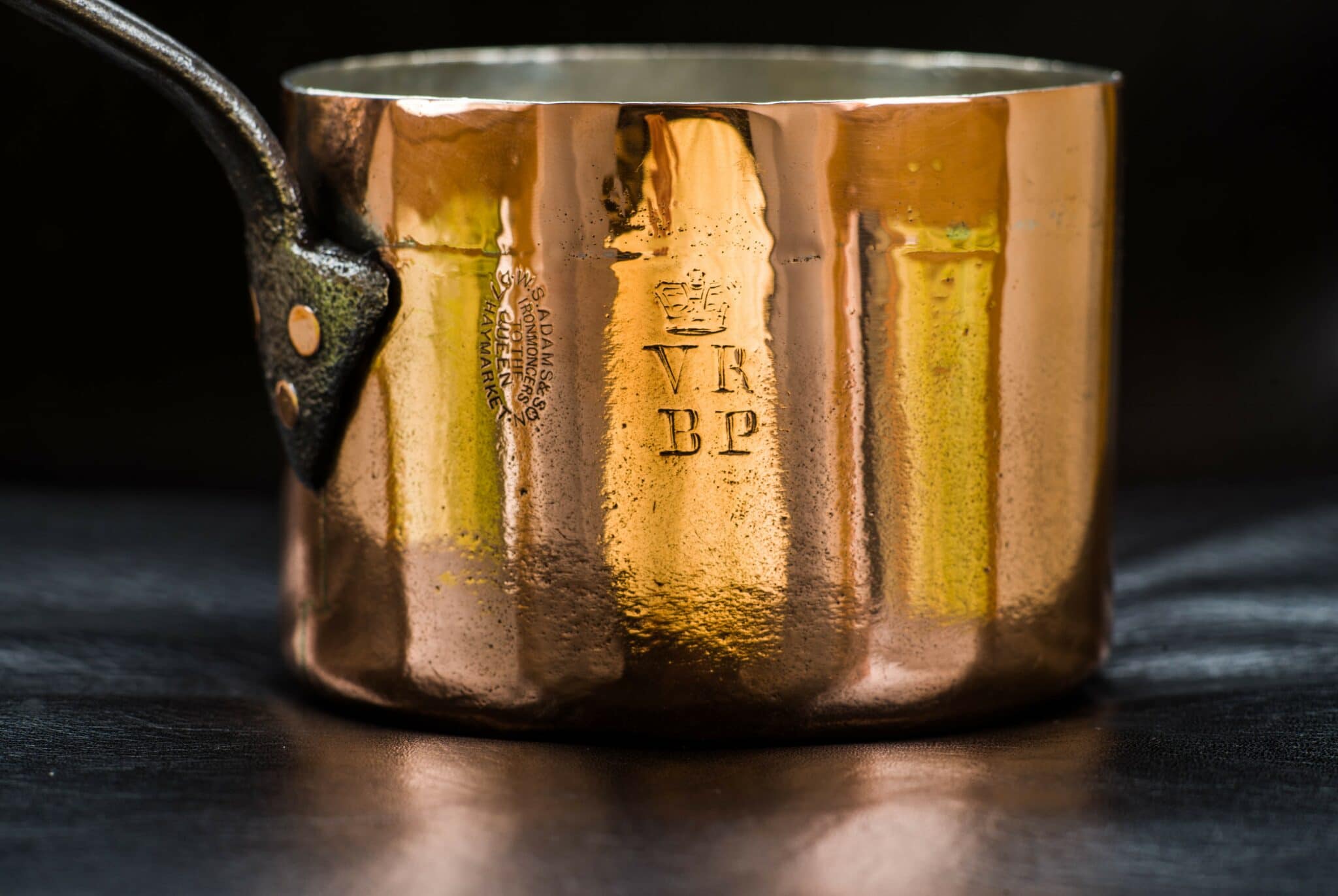

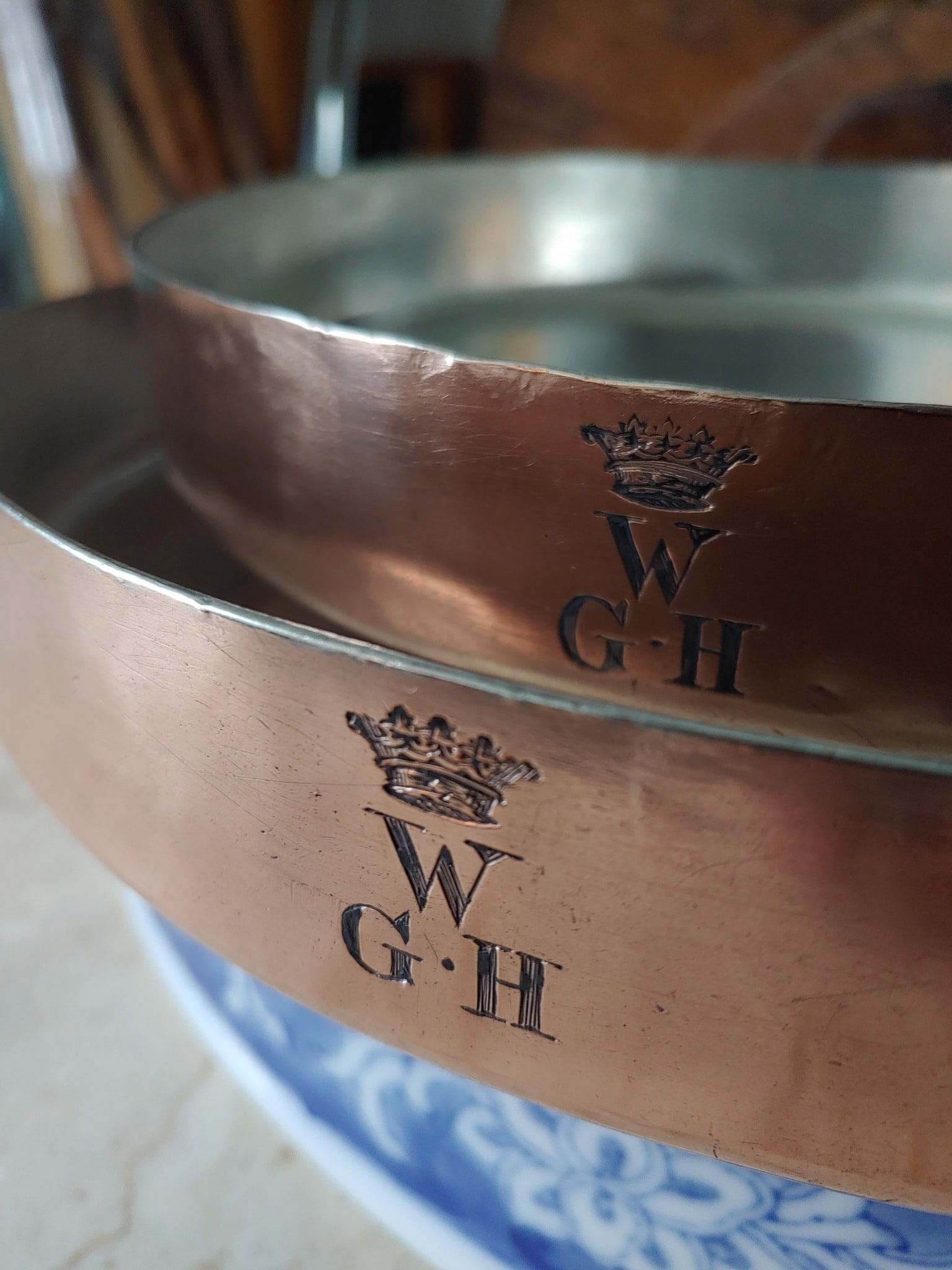
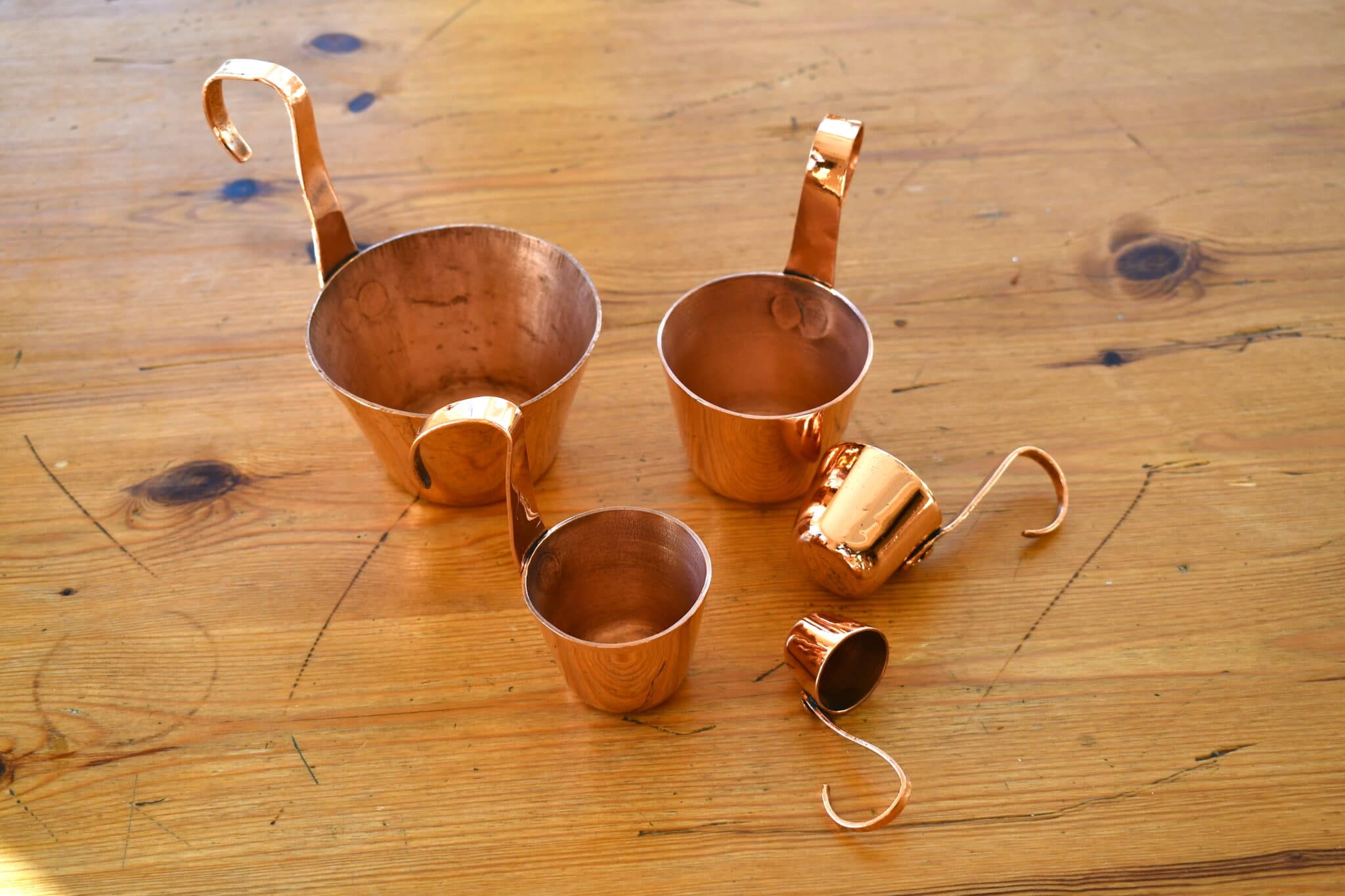
Hi VFC, some time ago you shared a photo of a thick French copper poele. I seem to recall it being 4 mm, but I could be wrong and this 3 mm Pam may have been the one I’m recalling. What a gorgeous work of art!
Do you know why so few frying pans were made in heavy copper? I’ve never found even one 3 mm round skillet, but have seen many 3 mm sauté pans.
I’m eager to find. 3-4 mm french copper skillet.
Wishing you the best!
Hey Alarash! This 3mm skillet is the thickest I’ve come across, and also the only one of its kind that I’ve seen. I would love to find more like it and I keep an eye on the eBay and Etsy listings, but as far as I can tell, Mauviel tops out at 2.5mm. I still do not know who made this 3mm beast but I am coming to suspect it was a small Villedieu maker, maybe a special order from Multiform or something like that. If you are hunting like I am, look for weight: a 26cm 2.5mm skillet will be 1900-2000g; a 30cm 2.5mm will be about 2500g. Adding .5mm thickness to each of those diameters would add about 400-500g to the weight. (100g variation is not significant.) This 31cm is a hefty 3200g, but some of that is an extra cm in diameter as well as the brass helper handle.
And that brings me to your second question: I think Mauviel didn’t go above 2.5mm because the skillet starts to get quite heavy. From what I have read and observed, skillets are intended to be the most dynamic pans of all — tossed, tipped, swirled, et cetera. This 3mm skillet is so heavy — 7 pounds! — that it needs a helper handle, which seems pretty antithetical to that model! I adore this hefty skillet but it’s a resolutely earthbound piece for me. Perhaps that’s why it’s such a rare (flightless) bird.
Good luck with your search. If you find a 3mm piece or — the true unicorn, something thicker! — I would love to hear about it!